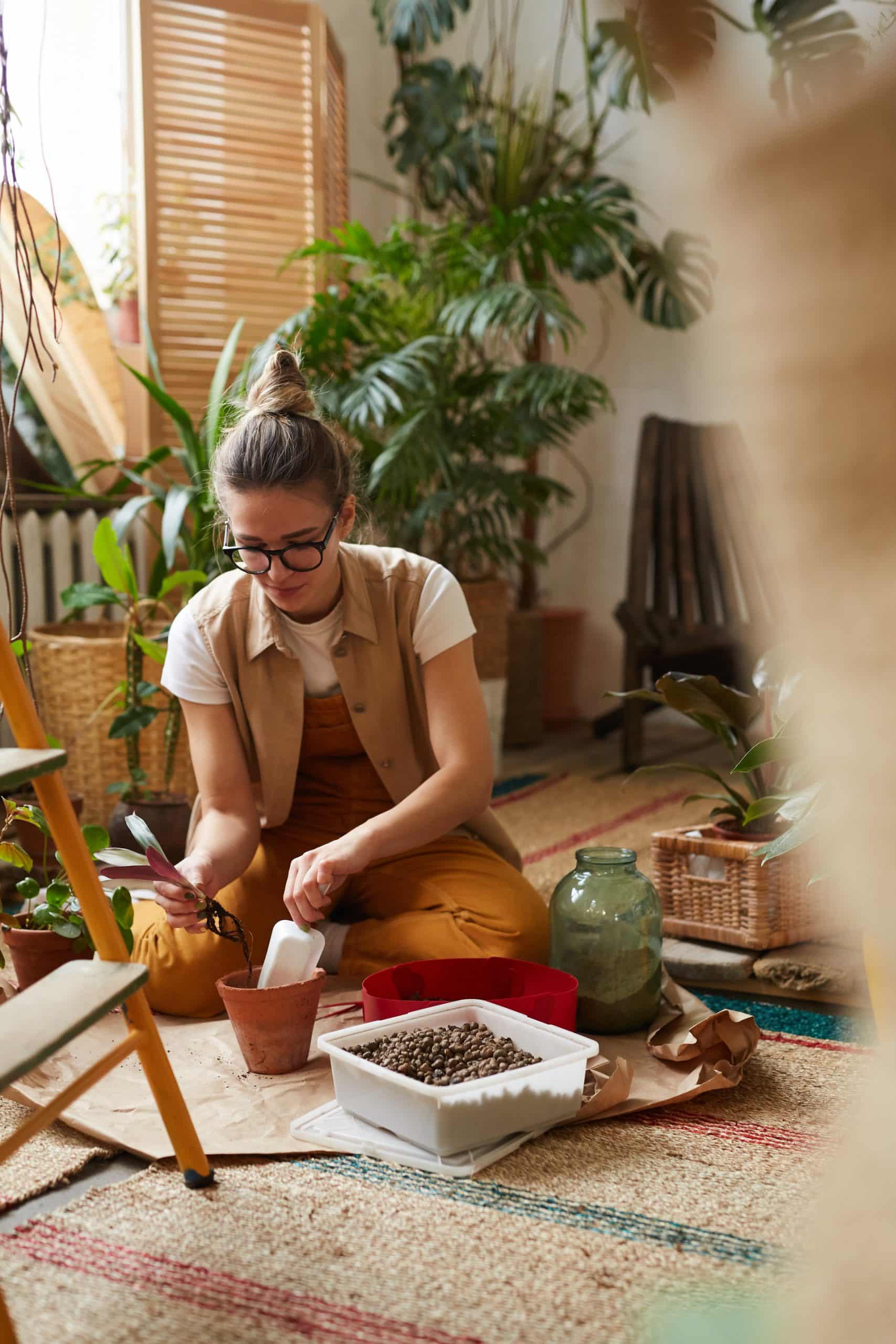What Are the Best Plants for Creating a Serene Meditation Corner in a Busy Household?

In the hustle and bustle of modern life, it’s essential to take a step back and find a space for peace and quiet. A place where you can let your thoughts wander and your spirit rest. One of the best ways to create this sanctuary is to cultivate a meditation corner in your own home. This quiet space, filled with calming elements, can serve as the perfect environment for your mindfulness practice.
A key element to consider when creating your meditation space is incorporating the right plants. Besides being natural decorations, plants can also help create a serene atmosphere that is conducive to meditation. This article will guide you through the best plants to consider for your meditation corner and how they can contribute to a calming environment.
A découvrir également : How to Utilize Vertical Space for Storage in a Studio Apartment with High Ceilings?
The Benefits of Plants in Your Meditation Room
The inclusion of plants in your meditation space is more than just an aesthetic choice. They provide a host of benefits that can enhance your meditation practice and promote a serene environment.
Boosting Your Mood
Cela peut vous intéresser : What’s the Best Way to Set Up a Self-Sufficient Potting Station for Urban Gardeners?
Research has shown that being around plants can enhance your mood and decrease your stress levels. This is because plants can help create a calming atmosphere that promotes relaxation and well-being. For those of you who find it difficult to achieve a relaxed state during meditation, incorporating plants into your space could be a way to help ease your mind and facilitate a deeper level of relaxation.
Improving Air Quality
Plants can also play a significant role in improving the air quality in your room. They do this by absorbing the carbon dioxide in the air and releasing oxygen, which can improve the overall air quality in your space. This not only makes your room feel fresher, but it can also support your breathing exercises during meditation.
Creating a Connection with Nature
Being in nature has long been known to have a calming effect on the mind. When you bring elements of nature into your meditation space, such as plants, you’re essentially creating a mini oasis where you can connect with the natural world. This connection can enhance your meditation practice, helping you feel more grounded and present.
Choosing the Right Plants for Your Meditation Space
Not every plant will suit your meditation space. You need to consider factors such as the amount of lighting available, the size of your space, and the level of care each plant requires. Here are some plants that thrive in indoor conditions and are known for their calming properties.
Snake Plant
The snake plant, also known as mother-in-law’s tongue, is an excellent choice for a meditation space. They are easy to care for, requiring minimal water and light, and are known for their ability to purify the air by removing toxins.
Peace Lily
The peace lily is another plant that is known for its ability to purify the air. In addition, it has beautiful white flowers that can add a touch of elegance to your meditation corner. However, peace lilies do require a bit more care than snake plants, as they need to be kept in a well-lit area and watered regularly.
Spider Plant
Spider plants are popular indoor plants that are known for their ability to adapt to a variety of conditions. These plants can thrive even in low light conditions, making them perfect for a meditation space that doesn’t get a lot of natural light.
How to Arrange Your Plants for Optimal Serenity
When arranging your plants, it’s important to create a sense of balance and harmony in your space. Avoid overcrowding your area with too many plants, as this can make your space feel cluttered rather than calming.
Consider placing your plants in different areas of your room to create a sense of depth. For example, you can put a tall snake plant in one corner and a smaller peace lily on a table or shelf. This placement creates a layered look that adds interest to your space.
Remember to also place your plants in areas where they can receive adequate light. If your room lacks sufficient natural light, consider investing in a grow light to ensure your plants receive the light they need to thrive.
Creating a Calming Atmosphere with Plants
Finally, it’s not just about having plants in your space, but how you use them to create a calming environment. Consider incorporating other natural elements like stones, water fountains, or wood to complement your plants and create a cohesive look.
You might also want to think about incorporating essential oils with calming scents, like lavender or chamomile, into your meditation practice. Many plants, such as the peace lily, have a mild fragrance that can contribute to a calming atmosphere.
Incorporating plants into your meditation space can help create a serene environment that supports your practice. By considering factors like the type of plants, their placement, and their care, you can create a meditation corner that not only looks good but also enhances your overall mindfulness practice. Remember, the goal is to create a space that feels like a retreat from the rest of the world – a corner of serenity in a busy household.
Adding Other Natural Elements to Your Meditation Space
When creating a serene atmosphere in your meditation corner, it’s not only about the plants you choose but also about using other natural elements to complement those plants. In addition to having an assortment of indoor plants, consider introducing elements like stones, water fountains, or wood into your space.
Stones, for instance, can be used to create a small zen garden or simply scattered around your space to create a sense of earthiness. You can choose stones that appeal to you aesthetically or that carry specific meanings in various cultures. If you like the sound of water, consider adding a small water fountain to your meditation space. The sound of flowing water can promote relaxation and help you focus during your meditation. Wooden elements, such as a meditation stool or wooden bowls, can also add a calming, organic touch to your space.
Don’t forget about lighting, too. A meditation space with natural light is ideal, but if your room lacks sufficient daylight, consider getting a grow light for your plants or using soft artificial lighting to mimic natural light.
The Role of Essential Oils in Your Meditation Practice
Essential oils, known for their therapeutic properties, can be an excellent addition to your meditation practice. They can enhance the ambiance of your space, complement your indoor plants, and provide a variety of health benefits.
Lavender is a popular choice for meditation as it is known for its calming properties. It can help reduce anxiety, stress and promote better sleep. Another option is chamomile, valued for its soothing and relaxing effects. You can use essential oils in a diffuser, or add a few drops to your meditation cushion or rug.
Some plants, such as the peace lily, have a mild scent that can contribute to creating a serene environment. However, if you’re sensitive to scents, opt for unscented plants and rely on essential oils for creating the desired atmosphere.
Conclusion: Creating Your Serene Meditation Corner
In the end, creating a serene meditation corner in a busy household is about curating a space that aligns with your needs and aesthetic preferences. Whether you choose to fill your space with a variety of indoor plants, incorporate natural elements like stones or wood, or enhance your meditation practice with essential oils, remember that this space is meant for you. It should be a place where you can retreat from the rest of the world, connect with nature, and focus on your mindfulness practice.
Each element in your meditation space – from the snake plant in the corner to the lavender oil diffusing through the room – should contribute to creating a serene atmosphere. By paying attention to the details, you can create a meditation corner that not only looks good but also enhances your overall mindfulness practice. So, take a step back from the hustle and bustle of daily life, breathe in the oxygen-rich air from your plants, and embrace the tranquillity of your own personal zen space.
